Best Full-Frame Mirrorless Camera in the World
Full-frame cameras are the best of the best: they have the largest sensors, the most megapixels, and lenses that are simply unmatched. Despite the size and cost, they are the go-to choice among enthusiasts and top professional photographers. In addition to DSLRs, which have long dominated the market, Sony's popular a7 series of full-frame mirrorless cameras are lighter and more compact, and brands like Nikon, Canon, and Panasonic recently have followed suit. Below are the best full-frame cameras of 2019, from top all-rounders and specialty models to leading budget options. For more background information, see our full-frame camera comparison table and buying advice below the picks.
Best Full-Frame Mirrorless Camera
1. Sony Alpha a7R III ($2,498)
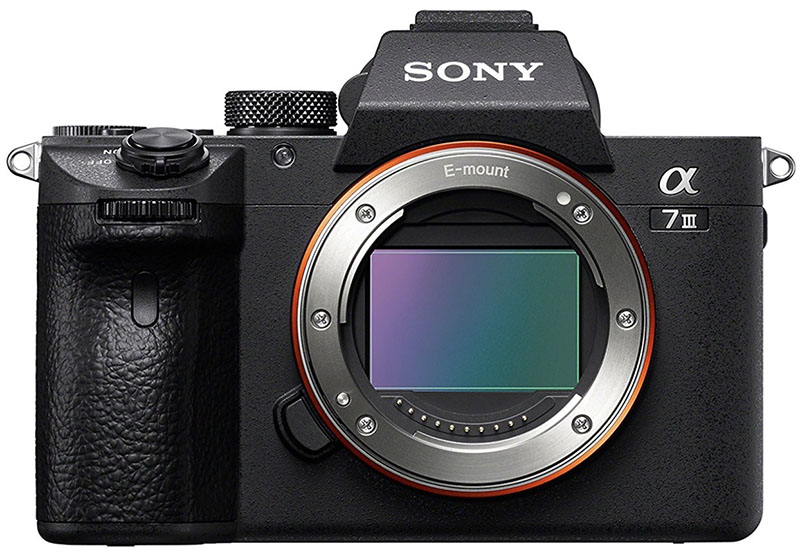
Megapixels: 42.4
Weight: 23.2 oz.
What we like: Excellent image and video quality in a compact and easy-to-use package.
What we don’t: The new a7R IV has more megapixels.
Lenses: 10 Great Sony FE (Full Frame) Lenses
Mirrorless cameras have come a long way, and the full-frame Sony a7R III is the whole package. It’s one of the highest-resolution cameras on the market at 42.4 megapixels, and you get a host of features including advanced autofocus with touch functionality, in-body image stabilization, and 4K video at multiple speeds. Importantly, Sony more than doubled the battery life, which was the Achilles’ heel of the older models. Last but not least, Sony's collection of FE full-frame lenses is becoming very competitive with the likes of Nikon and Canon—perhaps not yet in volume, but in quality. All in all, we know a number of enthusiasts and professionals who have switched to Sony and never looked back.
It’s worth noting that Sony just released the new Sony a7R IV below, which offers a whopping 61 megapixels of resolution along with a handful of autofocus and video improvements. Why do we still have the a7R III ranked here? It’s $1,000 cheaper and available (the IV is on backorder at many retailers), not to mention 42.4 megapixels is ample resolution for most people. For serious photographers who own Sony’s GM lenses or other high-priced glass, the IV certainly is an attractive upgrade. But for most, the III is more than enough camera and a better value.
Best Full-Frame DSLR
2. Nikon D850 ($2,997)
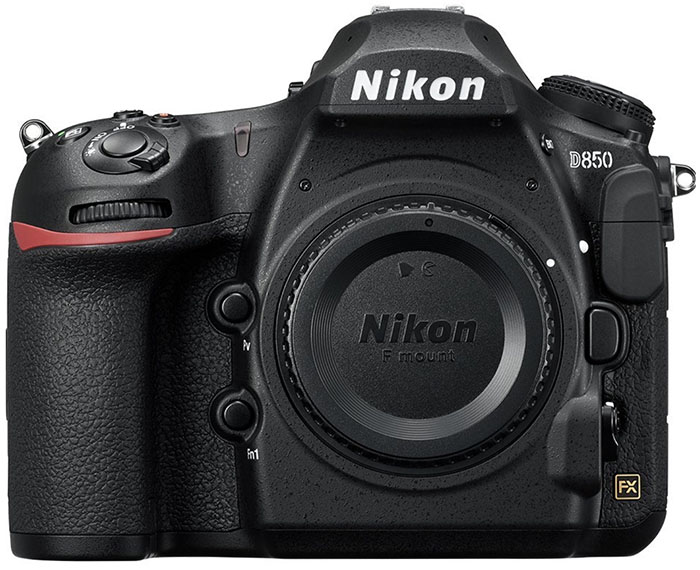
Megapixels: 45.7
Weight: 32.3 oz.
What we like: The features and ergonomics can't be beaten.
What we don’t: Bulkier and heavier than the mirrorless competition.
Lenses: 10 Great Nikon FX (Full Frame) Lenses
If you're in the market for a full-frame DSLR, it's hard to argue against the Nikon D850. Simply put, this camera beats out the Canon 5D Mark IV below in most relevant categories. To name a handful, the D850 has a whopping 45.7 megapixels of resolution vs. 30.4 on the 5D Mark IV, superior autofocus, faster buffering speeds, a higher resolution LCD screen, and significantly longer battery life. The 5D Mark IV does weigh slightly less and has built-in GPS, but given that both cameras are similar in price, we favor the D850 in a big way.
We hemmed and hawed about whether to rank the mirrorless Sony a7R III over the Nikon D850 on this list—both are top-notch full-frame cameras in just about every way. For professionals who use their camera every day, the optical viewfinder on the D850 may be a deciding factor, along with the collection of full-frame lenses they likely already own. And while Sony has dramatically improved the autofocus capabilities of their cameras, the D850 still is superior in this regard. Having said that, all signs point to mirrorless leading the charge in the future, so much so that Nikon released the Z7 and Z6 below.
Best Budget Full-Frame Camera
3. Canon EOS 6D Mark II ($1,499)
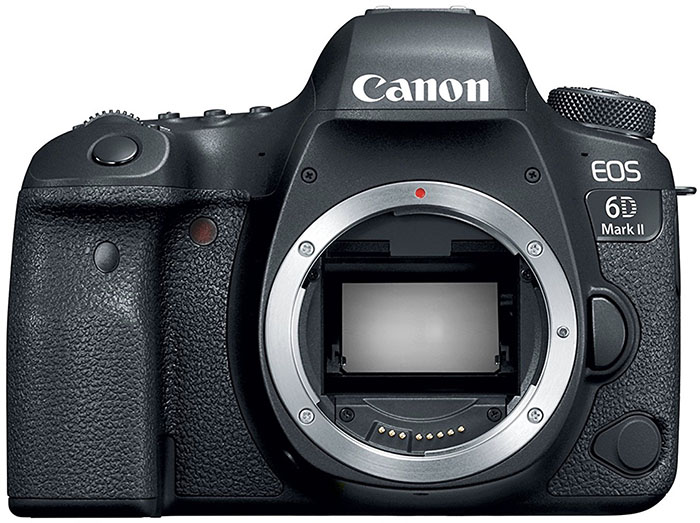
Megapixels: 26.2
Weight: 24.2 oz.
What we like: A great value for a full-frame camera.
What we don’t: Video shooters may want to spend up for the 5D series.
Lenses: 10 Great Canon EF (Full Frame) Lenses
We have been fans of Canon's 6D series for years, which represents an affordable entry point into the full-frame market from one of the best in the business. Last year, Canon released the 6D Mark II, which offers notable improvements over its predecessor while still staying well below the $2,000 threshold. Compared to the older model, you get a bump in resolution to 26.2 megapixels, a more advanced autofocus system, faster shooting, and touchscreen functionality on the rear LCD. All are solid improvements and make the 6D Mark II a really nice value, particularly for still photography (the 5D series admittedly is much better for video).
The biggest competitor to the Canon 6D Mark II is the Nikon D750 below. Both have similar resolutions (the 6D Mark II is slightly better in this regard with 2 more megapixels) and burst rates (6.5 frames per second), but the Canon feels more modern with its touchscreen, Bluetooth and NFC connectivity, and newer processor. And it should: the Nikon D750 was released all the way back in 2014 with no word yet on a successor. If you're considering going mirrorless, the Sony a7 III is a fun camera that also is reasonably priced.
Best of the Rest
Best of the Rest
4. Sony Alpha a7R IV ($3,498)

Megapixels: 61
Weight: 23.5 oz.
What we like: The highest-resolution full-frame camera on the market.
What we don’t: Pricey and 61 megapixels is overkill for some people and lenses.
Lenses: 10 Great Sony FE (Full Frame) Lenses
Just when it seemed like competing brands Canon, Nikon, and now Panasonic might catch up, Sony had to release the a7R IV. New for September of 2019, this sleek mirrorless camera features an impressive 61 megapixels, which far surpasses the a7R III (42.4 MP) above and Panasonic S1R (47.3 MP) below to become the highest-resolution full-frame camera (you’ll have to go medium format to get higher). Sony also improved the autofocus significantly, which wasn’t a shortcoming with the older model but makes the IV even more attractive for action and video. Add in easy-to-use functionality, a wide array of video speeds, and premium build quality including weather sealing, and this is one superb camera that should make the most discerning photographers happy.
The big question for many is whether to order the new Sony a7R IV or save with the older III. The latter currently is selling for a significant $1,000 less, isn’t on backorder and its 42.4 megapixels are ample for most people, including professionals who aren’t making billboard-sized prints or working in the fine art or landscape worlds. The autofocus improvements on the a7R IV are nice, as is the real-time eye autofocus while shooting video, but many other features and specs remain the same. For pixel peepers, action shooters, and those with deep pockets, the IV is the new king of the hill, but the III is cheaper and available.
5. Canon EOS 5D Mark IV ($2,799)

Megapixels: 30.4
Weight: 28.2 oz.
What we like: Does everything well.
What we don’t: Fewer megapixels and features than the Nikon D850 above.
Lenses: 10 Great Canon EF (Full Frame) Lenses
For non-action shooters, the 5D Mark IV is Canon's leading full-frame DSLR and is loaded with functionality. This popular camera comes with big improvements over the older 5D Mark III including a jump in resolution to 30.4 megapixels, 4K video, and a faster burst rate at 7 frames per second. A notable plus in going with a pro-level Canon camera is the amazing color rendering and skin tones that the brand is known for. For everyone from professional photographers to enthusiasts, the 5D continues to be one of the top DSLRs on the market, period.
The Canon 5D Mark IV, however, is in many ways outmatched by the Nikon D850. As described above, the Nikon wins out in most categories that matter: it has more megapixels, superior autofocus, a more modern feature set, and both cameras are similarly priced. Given that most professionals choose one brand and stick with it (it's not easy or cheap to switch out an entire collection of lenses), the 5D Mark IV is more than enough camera for most people. And new for last year, Canon's long-awaited EOS R has been dubbed the mirrorless version of the 5D Mark IV, which certainly was an exciting development.
6. Sony Alpha a7 III ($1,998)
6. Sony Alpha a7 III ($1,998)
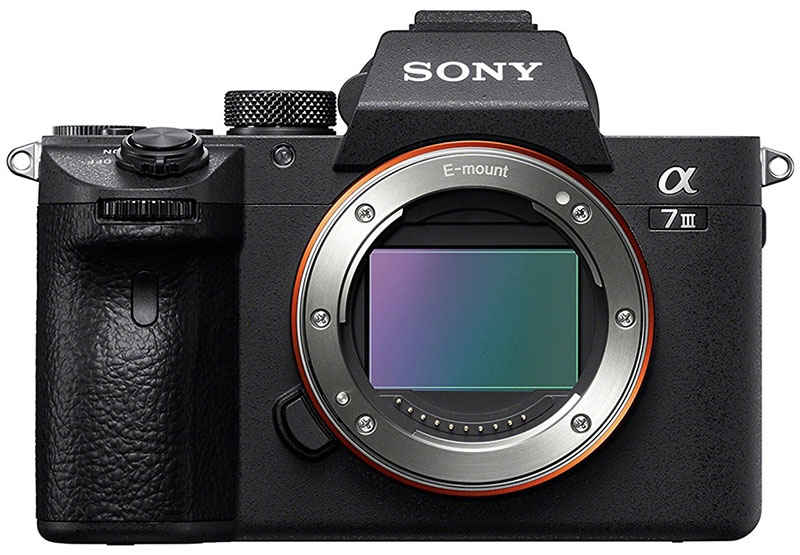
Megapixels: 24.2
Weight: 22.9 oz.
What we like: A more affordable way to access Sony’s popular a7 series.
What we don’t: Lower resolution than the a7R III.
Lenses: 10 Great Sony FE (Full Frame) Lenses
We'll start by saying that we really like what Sony has done with the Alpha a7 III. This camera incorporates many features from the popular a7R III above, including a fast burst rate of 10 frames per second, 4K video functionality, and the FZ100 battery that more than doubles the number of photos you can take compared to the older a7 II. While the a7R III is totally capable of shooting action, the a7 III actually is better in this regard with 693 autofocus points compared to the 399 on the a7R III. And at just under $2,000, it's a reasonably-priced way to access Sony's full-frame camera lineup without sacrificing a ton in the way of performance.
What are the shortcomings of the Sony a7 III? Most notably, the camera has a 24-megapixel sensor, which represents a considerable drop from the 42.4 megapixels of the a7R III. However, for many people—and particularly non-professionals who won't be enlarging their prints to epic proportions—this is ample resolution and can create outstanding images and videos. And an upside to the image size is that processing photos will be faster as your computer won't be bogged down by the massive files. All in all, similar to the Canon 6D Mark II and Nikon D750, the a7 III can be everything you need in a full-frame camera and nothing you don't.
7. Canon EOS R ($1,999)
7. Canon EOS R ($1,999)
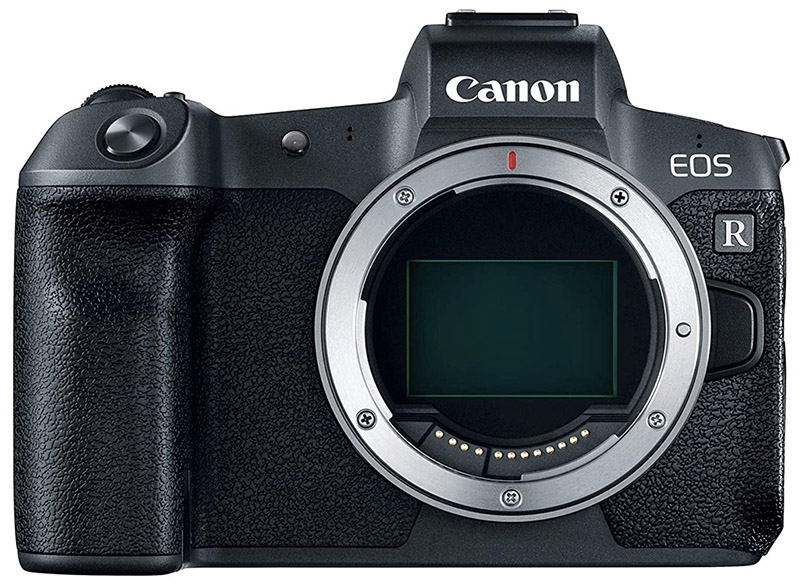
Megapixels: 30.3
Weight: 20.5 oz.
What we like: More megapixels than the Sony a7 III or Nikon Z6.
What we don't: Lacks in-body image stabilization.
Sony dominated the pro mirrorless market for years, while Canon fans waited patiently for their time. New for last year, the EOS R has generated a lot of excitement. For around $2,000, you get 30.3 megapixels of full-frame resolution (more than the Sony a7 III or Nikon Z6), a robust autofocus system, and fast buffering for action photography and video. Perhaps most importantly—and the reason many people go mirrorless—the EOS R weighs just 20.5 ounces and has a much smaller form factor than its DSLR counterparts. Even the Canon 6D Mark II above, for example, weighs 24.2 ounces and is much larger in the hand, while the 5D Mark IV comes in at 28.2 ounces.
The most notable downside of going mirrorless in 2019 is Canon's limited collection of RF lenses (for now). As of press time, there are only a handful of RF lenses on the market, including limited wide-angle and telephoto options. It's worth noting that Canon's EF to R adapter—offered with the camera for only $99 more—is getting high marks in terms of performance with EF lenses (you also can use EF-S lenses and the camera has a nifty automatic crop mode). In addition, the EOS R does not have in-body image stabilization, unlike its Sony and Nikon counterparts. These issues aside, we love the performance and price of this camera, which is why it's ranked here.
8. Nikon D750 ($1,497)
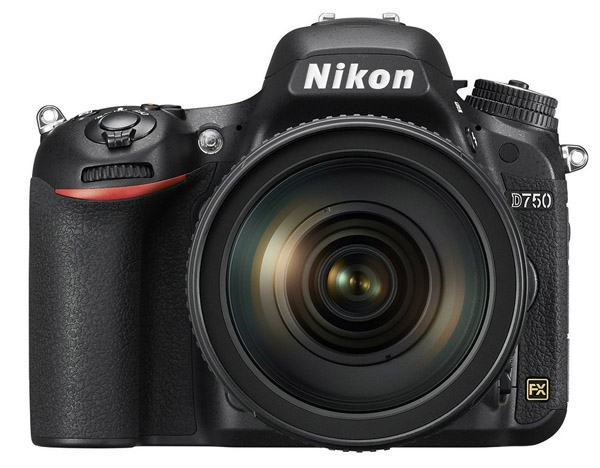
Megapixels: 24.3
Weight: 26.5 oz.
What we like: A sub-$1,500 full-frame camera from one of the best in the business.
What we don't: Lower resolution than the D850 and has an optical low pass filter.
Lenses: Best Lenses for Nikon D750
Nikon had a rough start with its "budget" full-frame DSLR line: the old Nikon D610 and D600 had sensor spotting issues that were tough to overcome. The good news is that the D750 is the real deal and one of the best values on this list. For less than $1,500, you get a full-frame image sensor with 24 megapixels of resolution, good weather sealing, and reasonably fast shooting speeds at 6.5 frames per second. Despite being released all the way back in 2014, it's telling that the D750 is one of the oldest models on this list yet still sits at #6. Simply put, it's a quality camera at a very reasonable price point.
It's interesting that Nikon hasn't yet announced a successor to the popular D750, although that may be coming soon. The company has been focusing on its new full-frame mirrorless system including the Z7 and Z6 below, but the D750 is missing some important features that people have come to expect in 2019. For example, the camera lacks image stabilization, touchscreen functionality, and does not shoot 4K video. But most of the other components are there, including great image quality for the price and access to Nikon's vast collection of full-frame lenses. For still shooters on a budget, the D750 still is a nice choice.
9. Nikon Z7 ($2,997)
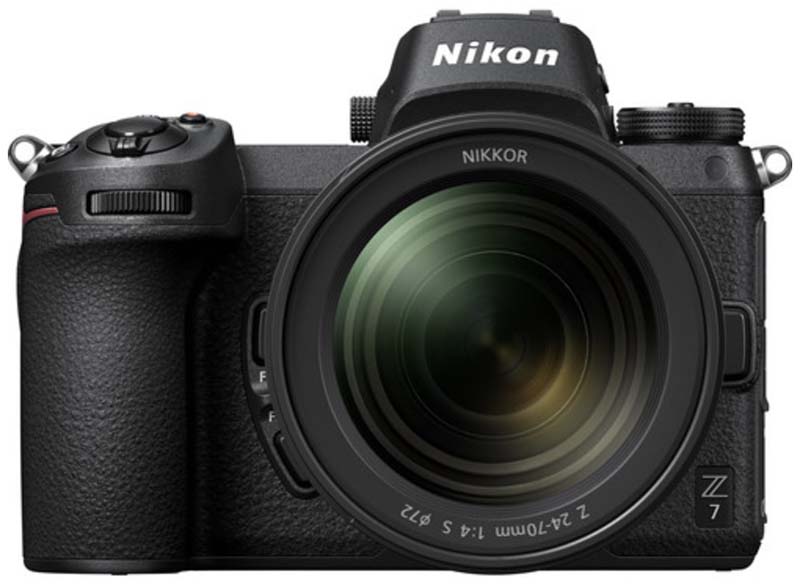
Category: Mirrorless
Megapixels: 45.7
Weight: 20.6 oz.
What we like: Higher resolution than the Sony a7R III.
What we don't: Pricey and only four Z-mount lenses to choose from.
Megapixels: 45.7
Weight: 20.6 oz.
What we like: Higher resolution than the Sony a7R III.
What we don't: Pricey and only four Z-mount lenses to choose from.
Nikon came out swinging with its new Z7 and Z6 full-frame mirrorless cameras. The Z7 is the higher-resolution and more expensive model of the two, featuring an impressive 45.7-megapixel image sensor (more than the Sony a7R III), in-body image stabilization, superb low light performance, wide variety of video speeds, and just about all of the other advanced features you would expect from a new camera at this price point. The price is high, but the Z7 is one of the premier full-frame cameras on the market in 2019.
When comparing the Nikon Z7 to the uber-popular Sony a7R III, it's a close call between the two. The Z7 has slightly more megapixels, better ISO sensitivity, and a higher resolution rear LCD screen, while the a7R III shoots slightly faster, has dual memory card slots, superior battery life, and is cheaper. But perhaps most important—and the reason the Z7 is ranked here—is lens selection. The first four Z-mount lenses are good but not great, including maximum apertures that are rather pedestrian for the professional set. Nikon has released an impressive roadmap of Z-mount lenses that starts filling in the gaps over the next couple of years, but realistically, this system is quite limited to start. The company does make an FTZ adapter that is $250 on its own or available in many of the Z7 and Z6 kits for less.
10. Pentax K-1 Mark II ($1,797)

Megapixels: 36.4
Weight: 32.6 oz.
What we like: A nice option for outdoor photographers with good resolution and great weather sealing.
What we don't: Mediocre autofocus and lens selection.
It's easy to sleep on Pentax, but the brand has a loyal following among outdoor photographers who appreciate the weather sealing and value. Earlier this year, Pentax released the K-1 Mark II, which was one of the more interesting developments in the full-frame market. Yes, you only get a minuscule upgrade of .2 megapixels total, but the camera now offers an advanced pixel shift mode. Essentially, you can shoot handheld and it will combine four images into one very high-resolution file. It doesn't work perfectly and some still recommend using a tripod with pixel shift, but it's an exciting advancement and we love seeing Pentax take the leap.
One of the biggest complaints about the original K-1 was poor autofocus tracking. While Mark II is a step up and the autofocus is considerably more reliable, it still lags behind the competition and we wouldn't recommend going with this body if you're looking to shoot fast-moving objects. Unfortunately, Pentax also took the liberty of baking in mandatory noise reduction into higher ISO files, which we think degrades image quality straight out of the camera. Both of these aspects speak to the true intended usage of the K-1 Mark II: a rugged landscape camera meant to be used on a tripod. Out in the elements and capturing epic landscapes is where it really shines.
11. Panasonic S1R ($2,998)
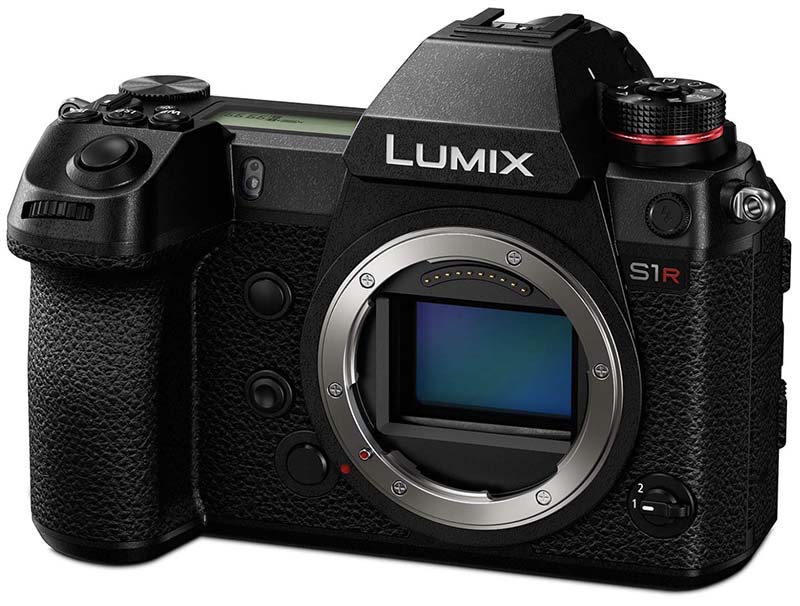
Megapixels: 47.3
Weight: 36 oz.
What we like: Impressive resolution and a trusty-feeling form factor.
What we don’t: Heavy and the S1 and S1H both are better for video.
Panasonic has long been a mirrorless leader with its Micro Four Thirds systems, but many waited patiently for the company to make the jump to full-frame. Released in 2019, the new S1R is a whopper. At 47.3 megapixels, it’s the second-highest-resolution camera on this list behind only the Sony a7R IV above. As expected from Panasonic, the camera shoots excellent video including 4K at 60p. And this isn’t your traditional compact mirrorless model: at over 2 pounds, it’s heavier than most full-frame DSLRs on this list including the Nikon D850 and Canon 5D Mark IV.
The tough thing for Panasonic—and anyone so late to the game—is that the S1R doesn’t truly stand out in any particular category. It briefly was the highest-resolution mirrorless camera on the market, until the release of Sony a7R IV (it still beats out all Nikon and Canon mirrorless models). It’s also fairly pricey and a significant $500 more than the 42.4-megapixel Sony a7R III. Last but not least, Panasonic’s L-Mount lens alliance with Sigma and Leica is notable, although everyone has a lot of ground to make up to catch up with Sony. For video shooters, Panasonic also has released the hybrid Panasonic S1, which has fewer megapixels at 24.2 but no crop and better 4K with full-pixel readout, and the high-end S1H for serious cinematographers.
12. Canon EOS 5DS R ($3,699)

Megapixels: 50.6
Weight: 29.7 oz.
What we like: The highest resolution camera on the full-frame market.
What we don’t: High price tag and lack of video options.
Lenses: 10 Great Canon EF (Full Frame) Lenses
In the full-frame arms race, Canon took a big step forward with the 5DS R. Most impressive is the 50.6 megapixels of resolution, which surpasses the 5D Mark IV by 20.2 megapixels and even tops the Nikon D850 and Sony a7R III. It's worth noting that this camera bucks the hybrid trend and is designed primarily for still photography without video-centric features like headphone sockets or an HDMI output. And keep in mind that Canon released two slightly different versions of this camera: the 5DS (no "R") drops the optical low pass filter and costs $200 less. Both are phenomenal cameras for professional landscape and portrait photographers who don't need the speed or video capabilities of the other full-frame cameras above.
However, there are some downsides to consider here, and the 5DS R may not be quite as ideal as its 50.6 megapixels suggest. To start, it's not an amazing low light performer and doesn't have quite the dynamic range of a camera like the Sony a7R IV. Pair that with the relatively slow 5 frames per second of shooting speed, and it's not nearly as good of an action camera either. But if you're a Canon shooter in the hunt for medium format-like resolutions, the 5DS R is as close as you'll get. Other options include going with the a7R camera with an adaptor for Canon glass, and on the other side of the aisle, the Nikon D850 above is well worth a look at 45.7 megapixels.
13. Sony Alpha a9 ($3,498)
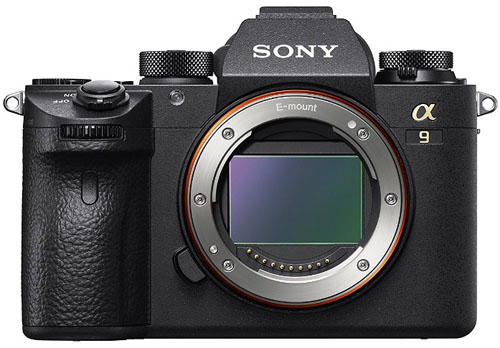
Megapixels: 24.2
Weight: 23.7 oz.
What we like: The fastest full-frame camera on this list at 20 frames per second.
What we don’t: Sony may be cannibalizing the a9 with the impressive a7R IV above.
Lenses: 10 Great Sony FE (Full Frame) Lenses
Over the past few years, mirrorless cameras have made serious inroads in areas like resolution and video quality, but pro-level speed has remained the sole domain of DSLRs. That all changed in April of 2017 when Sony announced the new Alpha a9. At a blazing fast 20 frames per second and with an ultra-advanced 693-point phase-detection autofocus, the Sony a9 outperforms leading options from other top brands like the Canon 1DX Mark II (14 fps) and Nikon D5 (12 fps). For sports and action photography, it’s the new clubhouse leader.
There are a couple of important reasons why the Sony a9 isn't ranked higher on this list. The first is practicality: few people outside the world of action photography need anything close to 20 frames per second, and therefore a higher resolution and less expensive camera like the a7R III is a better all-around fit. Second, the full-frame lens options for Sony are growing but still lag behind Canon and Nikon, and particularly at the telephoto end of the spectrum. Given that many sports and action photographers are deeply entrenched in their lens collections, it would be very costly to make the switch. However, Sony has shown they are committed to expanding their lenses, which is demonstrated by the recent release of the 400mm f/2.8 and 100-400mm f/4.5-5.6.
14. Canon EOS 1D X Mark II ($5,499)

Megapixels: 20.2
Weight: 53.4 oz.
What we like: The top DSLR on the market for action photographers.
What we don’t: Hefty size, short battery life, and high price.
Lenses: 10 Great Canon EF (Full Frame) Lenses
The Canon 1D X Mark II and Nikon D5, along with the much less-popular Sony a99 II, offer the fastest shooting speeds of any DSLRs on this list (the Sony a9 is fastest, but that's a mirrorless camera). In comparing the two heavy hitters, the Canon 1D X Mark II shoots faster at 14 frames per second instead of 12 on the D5, not to mention it costs approximately $500 less. On the other hand, the Nikon D5 has significantly better battery life and superior ISO sensitivity. Action shooters can't go wrong and both cameras are great at what they do, but we appreciate the extra speed and lower price of the 1D X Mark II.
Why aren't either the Canon 1D X Mark II or Nikon D5 ranked higher? First, they are specialty cameras for professional action photographers and the feature sets don't appeal to the majority of people. Second, a camera like the 1D X Mark II is extremely heavy at over 53 ounces, which is nearly double the Canon 5D Mark IV at just over 30 ounces. Finally, as we've alluded to above, mirrorless cameras like the Sony a9 are changing the game in terms of resolution and shooting speeds in compact packages. Canon's new EOS R is fairly mediocre in this regard at 9 frames per second (at least for mirrorless), but Nikon's Z6 is better at 12 frames per second. Once the lenses catch up, action photography seems to be trending mirrorless.
15. Nikon Z6 ($1,797)

Megapixels: 24.5
Weight: 20.6 oz.
What we like: A nice feature set at an attractive price point.
What we don't: Autofocus could be improved and Z-mount lens selection is limited.
Nikon's Z6 is the cheaper mirrorless sibling of the high-end Z7 above. For just under $2,000, you get a full-frame image sensor with 24.5 megapixels of resolution, in-body image stabilization, fast continuous shooting at 12 frames per second, and a tough, weather-sealed body that is built to Nikon's high standards. And with a weight of 20.6 ounces and a relatively small form factor, you get much better portability than DSLRs like the D750 (26.5 ounces) or hefty D850 (32.3 ounces). For those interested in Nikon's new mirrorless system, the Z6 offers a much more affordable entry point than the Z7.
Why is the Z6 so far down on this list? The reality is that it's a very competitive field in 2019 and the Z6 isn't perfect. To be specific, the autofocus system is solid overall but lags behind the competition in certain areas (subject tracking and refocusing in particular). And in choosing between this camera and the Sony a7 III, we're probably sounding like a broken record here, but lens selection made the difference for us. The first four Z-mount lenses are decent, but Canon's RF offerings are more impressive and Sony is years ahead in this regard.
16. Sony Alpha a99 II ($3,198)

Megapixels: 42.4
Weight: 30 oz.
What we like: Impressive specs across the board.
What we don’t: A-mount lens options and Sony's questionable commitment to DSLRs.
Just when many people thought Sony’s A-mount line of full-frame DSLRs was on the way out, the impressive a99 II hit the market. Released at the end of 2016 and four years after the original a99, the technological jumps were large. The a99 II has a whopping 42.4 megapixels of resolution vs. 24.3 on the old version, the camera shoots a speedy 12 fps instead of 6 fps, and you get 4K video, among a number of other features. This is an entirely different DSLR and gives heavy hitters like the Nikon D850 and Canon 5D Mark IV a run for their money.
Despite all the positives, it still feels like Sony's a7 cameras overshadow the a99 II. Much of the company's resources have gone toward developing and marketing mirrorless, and a good number of people already have settled on a7 systems (ourselves included). Further, the available A-Mount lenses fall well short of the quantity and quality for Canon or Nikon DSLRs. Sony is not abandoning the A-Mount and has said that they will be developing more lenses in the future, but it's hard to bump this camera further up this list until that comes to fruition.
17. Canon EOS RP ($1,299)

Megapixels: 26.2
Weight: 17.1 oz.
What we like: Lightweight and great value.
What we don’t: Does not excel at action or video.
With Canon’s mirrorless systems on the rise, many photographers were hoping for a cheaper full-frame alternative to the pricier EOS R above. Enter the trimmed-down EOS RP, which was released in 2019 and weighs in at just 17.1 ounces. All told, it’s the lightest full-frame mirrorless camera on the market, provides enough resolution for most people at 26.2 megapixels, and Canon’s RF lens selection is reaching a critical mass where an adapter isn’t mandatory. For those looking to join the full-frame mirrorless revolution on a budget, the Canon EOS RP is your best bet.
How does the Canon EOS RP stack up to EOS R? You sacrifice just over 4 megapixels of resolution, the RP has a slower burst rate at 4 fps, inferior autofocus, fewer framerates for video, and shorter battery life. All of those are important considerations, but so is the price tag, which is a significant $1,000 cheaper than the R. For still shooters in particular and those who cover ground, the EOS RP is a compact and lightweight mirrorless camera for just $1,300. And for bargain-seekers willing to explore the Sony side of the aisle, the 24.3-megapixel Alpha a7 II currently is selling for a low $898.
18. Nikon D5 ($5,997)
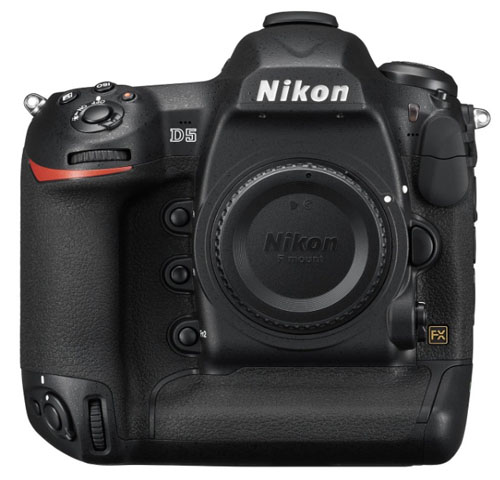
Megapixels: 20.8
Weight: 49.9 oz.
What we like: Fast burst and autofocus.
What we don’t: Slower than the Canon 1D X Mark II above; too heavy and expensive for most people.
Lenses: 10 Great Nikon FX (Full Frame) Lenses
The Nikon D5 is a monster of a full-frame DSLR. With blazing speed, it’s one of the cameras you’ll see behind the basket at the NBA Finals and on the sideline of the Super Bowl. However, the D5 weighs in at over 3 pounds—all other cameras on this list aside from the Canon 1D X II above are at least a full pound less. Redeeming features are the fast burst rate of up to 12 frames per second and impressive ISO range that goes from 100-102,400. If you shoot action or sports, this is the premier Nikon DSLR on the market and worth the investment (especially if your employer is paying).
With Nikon's recent entry into the full-frame mirrorless world, it will be interesting to see how models like the D5 fare. While the two mirrorless cameras weren't built to replace the D5, the Z6 can shoot a very respectable 12 frames per second (the Z7 is slower at 9 frames per second). With the new Z mount, these cameras are limited in terms of lens options without using an adapter, but Nikon already has expressed their plans to expand the Z line pretty quickly. We aren't saying that you should replace your D5 with a Z6, but it will be fun to see how Nikon's mirrorless system evolves.
19. Nikon D810 ($1,997)

Megapixels: 36.3
Weight: 31.1 oz.
What we like: Resolution and features still are competitive.
What we don’t: Lacking modern features like Wi-Fi and 4K.
Lenses: Best Lenses for Nikon D810
For years, the D810 was Nikon’s leading full-frame camera and still is quite impressive in terms of image quality and features. Despite being released all the way back in 2014, the 36.3-megapixel sensor beats the Canon 5D Mark IV’s 30.4 megapixels, and just about everything else is competitive. The camera shoots decently fast at 5 frames per second and has a longer battery life than the 5D Mark IV and Sony’s most recent mirrorless models. If you’re not always looking for the latest and greatest, the D810 should not disappoint.
It's really nice that the Nikon D810 saw a recent drop in price (it took longer than expected after the D850 was released). Now at less than $2,000, you get a nice jump in resolution from the Nikon D750 above, no optical low pass filter, and better ISO sensitivity, among other things. Given its age, the D810 lacks modern features like built-in Wi-Fi 4K video, but it’s a serious camera for still shooters looking to save.
20. Leica SL ($4,416)
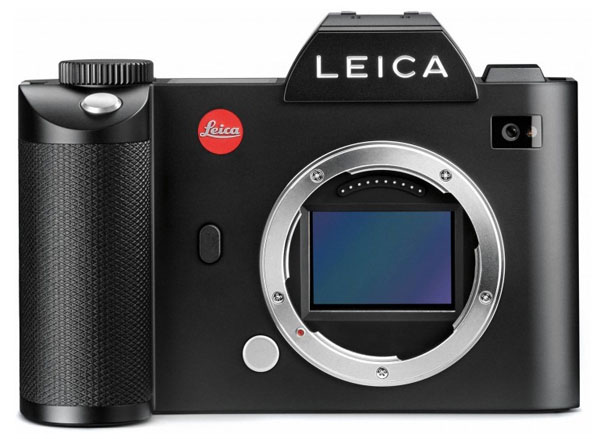
Megapixels: 24
Weight: 29.9 oz.
What we like: Leica image quality is tough to beat.
What we don’t: Nearly double the price of the Sony a7R III.
A few years ago, Leica released the SL, which represented their first foray into mirrorless. Sony was long overdue for a challenge, but we didn't expect it to first come from rangefinder-specialist Leica. On paper, the SL is impressive: a 24-megapixel full-frame image sensor, 4K video, an ultra-high-resolution electronic viewfinder, and a fast burst rate of 11 frames per second (for comparison, the a7R III shoots 10 frames per second). You also get a nifty top-mounted LCD display.
Coming in at nearly double the price of the a7R III, the real question is whether the SL merits the cost. People like to say that you're paying extra for the little red "Leica" badge on the camera, and while you do get some nice features and access to incredible glass, we don't think that paying nearly double the price of a Sony is worth it. Granted, Leica fans will fervently argue the opposite, but if you fall into that category then you don't need convincing from us. For the rest of you, we think you're better off saving with Sony.
Full-Frame Camera Comparison Table
| CAMERA | PRICE | MP | WEIGHT | BURST | ISO | 4K | 1080P SPEEDS |
|---|---|---|---|---|---|---|---|
| Sony Alpha a7R III | $2,498 | 42.4 | 23.2 oz. | 10 fps | 50-102400 | Yes | 120, 60, 50, 30, 25, 24 fps |
| Nikon D850 | $2,997 | 45.7 | 32.3 oz. | 7 fps | 32-102400 | Yes | 120, 60, 50, 30, 25, 24 fps |
| Canon 6D Mark II | $1,499 | 26.2 | 24.2 oz. | 6.5 fps | 100-25600 | No | 60, 30, 24 fps |
| Sony Alpha a7R IV | $3,498 | 61 | 23.5 oz. | 10 fps | 50-102400 | Yes | 120, 60, 50, 30, 25, 24 fps |
| Canon 5D Mark IV | $2,799 | 30.4 | 28.2 oz. | 7 fps | 50-102400 | Yes | 60, 30, 24 fps |
| Sony Alpha a7 III | $1,998 | 24.2 | 22.9 oz. | 10 fps | 100-51200 | Yes | 120, 60, 50, 30, 25, 24 fps |
| Canon EOS R | $1,999 | 30.3 | 20.5 oz. | 8 fps | 50-102400 | Yes | 60, 30, 24 fps |
| Nikon D750 | $1,497 | 24.3 | 26.5 oz. | 6.5 fps | 50-51200 | No | 30, 25, 24 fps |
| Nikon Z7 | $2,997 | 45.7 | 20.6 oz. | 9 fps | 32-102400 | Yes | 120, 100, 60, 50, 30, 25, 24 fps |
| Pentax K-1 Mark II | $1,797 | 36.4 | 32.6 oz. | 4.4 fps | 100-819200 | No | 30, 25, 24 fps |
| Panasonic S1R | $2,998 | 47.3 | 36 oz. | 9 fps | 50 to 51200 | Yes | 60, 30, 24 fps |
| Canon EOS 5DS R | $3,699 | 50.6 | 29.7 oz. | 5 fps | 50-102400 | No | 30, 25, 24 fps |
| Sony Alpha a9 | $3,498 | 24.2 | 23.7 oz. | 20 fps | 50-204800 | Yes | 120, 100, 60, 50, 30, 25, 24 fps |
| Canon 1D X Mark II | $5,499 | 20.2 | 53.4 oz. | 14 fps | 50-409600 | Yes | 120, 100, 60, 50, 30, 25, 24 fps |
| Nikon Z6 | $1,797 | 24.5 | 20.6 oz. | 12 fps | 50-204800 | Yes | 120, 100, 60, 50, 30, 25, 24 fps |
| Sony Alpha a99 II | $3,198 | 42 | 30 oz. | 12 fps | 50-102400 | Yes | 120, 100, 60, 50, 30, 25, 24 fps |
| Canon EOS RP | $1,299 | 26.2 | 17.1 oz. | 5 fps | 50 to 102400 | Yes | 60, 50, 30, 25 fps |
| Nikon D5 | $5,997 | 20.8 | 49.9 oz. | 12 fps | 50-3280000 | Yes | 60, 50, 30, 25, 24 fps |
| Nikon D810 | $1,997 | 36.3 | 31.1 oz. | 5 fps | 32-51200 | No | 60, 50, 30, 25, 24 fps |
| Leica SL | $4,416 | 24 | 29.9 oz. | 11 fps | 50-50000 | Yes | 120, 100, 60, 50, 30, 25, 24 fps |
Full-Frame Camera Buying Advice
- Resolution
- Weight and Size
- DSLRs vs. Mirrorless
- Video and 4K
- Shooting Speed
- Weather Sealing
- Lens Cost
- Choosing a Brand
- Learning Curve
- Full Frame vs. Medium Format
Resolution
Every camera on this list has a full-frame sensor that measures approximately 36 x 24 millimeters (some are slightly less by tenths of a millimeter). But megapixels are another factor in determining overall image quality. If you plan on enlarging photographs to massive proportions, you should consider a full-frame camera with a high megapixel count like the Sony Alpha a7R IV (61 MP), Panasonic S1R (47.3 MP), or Nikon D850 (45.7 MP), It's true that the differences may not be discernible at many print sizes and all of the cameras above can capture professional-grade images that can be enlarged and hung on your wall. But landscape photographers and others making large prints will appreciate the difference. Keep in mind that higher resolutions do come with the need to be very precise with your focusing and other technical aspects—any weaknesses will be magnified.

Weight and Size
Weight and size didn’t use to be major factors in choosing a full-frame camera. Most digital SLRs are in the ballpark of 30 ounces and action-centric models like the Canon 1D X Mark II and Nikon D5 are even heavier. Professional photographers had a bulky camera bag and set-up and there weren’t easy ways around it. However, Sony’s a7 series of full-frame mirrorless cameras changed the landscape, bringing the weight of the camera body closer to 20 ounces and with a much more compact form factor. Impressively, Canon's trimmed-down EOS RP weighs just 17.1 ounces.
It wasn’t until the second generation and the Sony's a7R II that we noticed a critical mass of professionals making the switch to lighter mirrorless cameras. A number of people picked up an early a7 or a7R, but those cameras had enough shortcomings—and combined with the lack of lens choices—were less viable for daily work. But when Sony beefed up the megapixel count on the a7R II to 42.4, added 4K video, and reinforced the lens mount, the camera quickly became a powerhouse. At least in the world of outdoor photography, a significant number of people have made the switch to the a7 series (now at the IV) and use it as their primary camera.
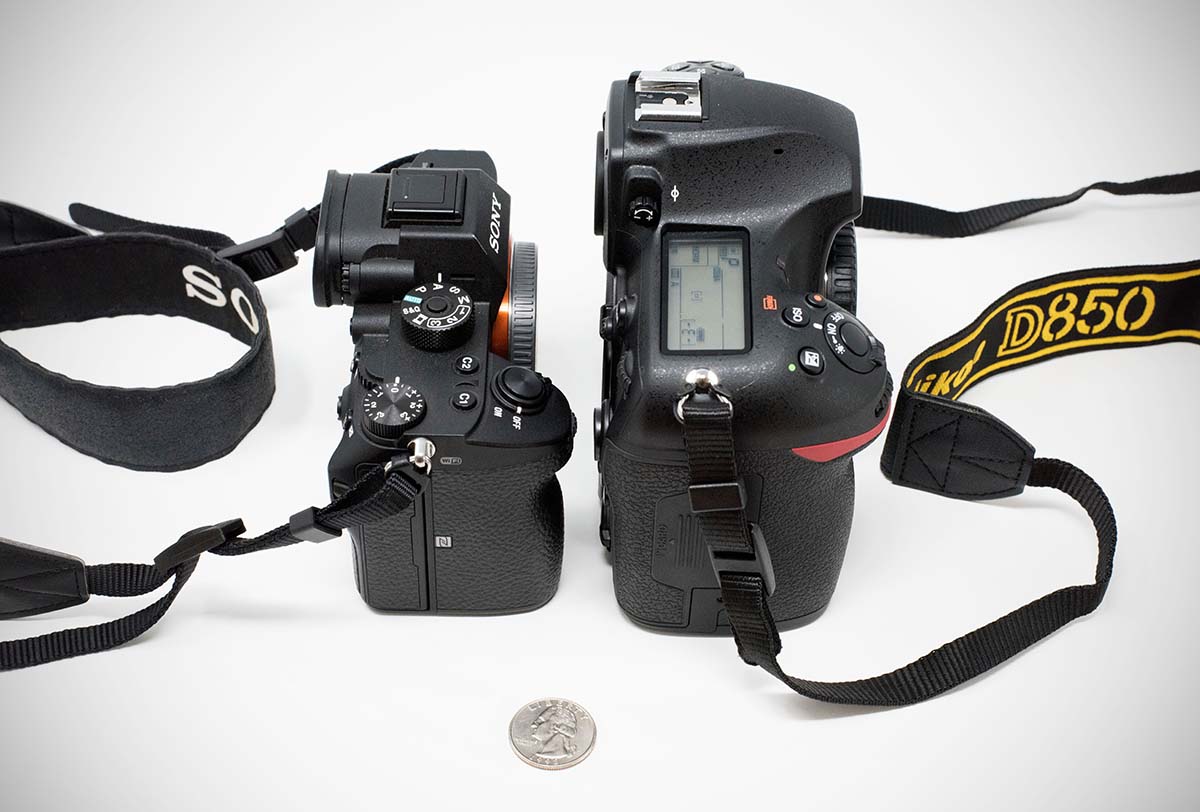
Keep in mind that with lenses included, you might not actually save all that much weight by going mirrorless. To use the standard 24-70mm f/2.8 pro zoom as an example, Sony’s version of that lens weighs in at a hefty 31.3 ounces, whereas Canon’s is only 28.4 ounces. This means that the Sony a7R III with a 24-70mm f/2.8 lens is 54.5 ounces total, while the Canon 5D Mark IV with a 24-70mm f/2.8 is 56.6 ounces. It’s true that the Sony a7R III has a smaller form factor, but the weight difference between those two set-ups is an insignificant 2.1 ounces. Mirrorless cameras are lighter, but perhaps not as much as people think.
Both Nikon with the Z7 and Z6, and Canon with the EOS R and EOS RP entered the full-frame mirrorless market, which was a big deal. While both of these cameras are much lighter than typical Nikon and Canon full-frame DSLR bodies, they run into the same problem as Sony when paired with lenses. And especially the Canon EOS R: the new RF-mount lenses tend to be even heavier than their EF counterparts. For example, the new 28-70mm f/2 comes in at a very substantial 50.4 ounces. Pair that with the EOS R, and you're looking at a set-up that weighs more than four pounds and is nearly one pound heavier than the Canon 5D Mark IV and 24-70mm f/2.8. In conclusion, while it seemed at the outset that one of the big perks of going mirrorless was saving weight, this becomes less relevant when taking lenses into account.
DSLRs vs. Mirrorless
For decades, digital SLRs reigned supreme in the full-frame camera world. Five years ago, along came Sony with the a7 series and things started to shift. Finally, there were full-frame camera bodies that were smaller than DSLRs yet offered comparable image quality. Granted, it took Sony a while to work through some bugs, and we saw rapid innovations and releases in their a7 line (they have come out with eight cameras in the a7 line in the last five years). Now, with cameras like the a7R IV, mirrorless has become a huge player and we've seen many professionals and enthusiasts switch from DSLRs to mirrorless. And with Nikon and Canon jumping into mirrorless, we expect more people to take the leap. What are the main differences between DLSRs and mirrorless cameras? We answer that question below.
Internal Mirror System (or Lack Thereof)
The most obvious difference is in the name: a mirrorless camera lacks the complex internal mirror system of a DSLR. This means that they are able to be smaller and lighter, and the absence of a mirror also means they can shoot at faster frame rates (there is no mechanism that needs to go up and down for each frame). This is why a camera like the Sony a9 is able to shoot up to 20 frames per second, whereas the Canon 1D X Mark II only goes up to 14 frames per second despite costing and weighing considerably more.
The most obvious difference is in the name: a mirrorless camera lacks the complex internal mirror system of a DSLR. This means that they are able to be smaller and lighter, and the absence of a mirror also means they can shoot at faster frame rates (there is no mechanism that needs to go up and down for each frame). This is why a camera like the Sony a9 is able to shoot up to 20 frames per second, whereas the Canon 1D X Mark II only goes up to 14 frames per second despite costing and weighing considerably more.
.jpg)
Battery Life
While mirrorless cameras do have advantages in terms of size and features, there are some notable downsides. First, there just isn't a ton of space for large batteries. Battery life (or lack thereof) has been one of the biggest complaints about mirrorless cameras, to the point where it is common to have to carry a pocket full of batteries for a long day of shooting (with a DSLR like the Nikon D850, you can only carry one battery per day). However, recent cameras like the Sony a7R III do have larger and better batteries than their predecessors, and while they still don't last as long as most DSLR cameras, we find them to be totally adequate for most people.
Optical vs. Electronic Viewfinders
Another big difference between these two camera styles are the viewfinders. DSLRs boast an optical viewfinder (OVF), whereas mirrorless cameras typically have electronic viewfinders (EVF). In comparing the two, an optical viewfinder shows you exactly what the lens is seeing rather than an electronic rendition, and many prefer the real-world experience of an OVF. For mirrorless enthusiasts, this is one sacrifice you just have to make.
While mirrorless cameras do have advantages in terms of size and features, there are some notable downsides. First, there just isn't a ton of space for large batteries. Battery life (or lack thereof) has been one of the biggest complaints about mirrorless cameras, to the point where it is common to have to carry a pocket full of batteries for a long day of shooting (with a DSLR like the Nikon D850, you can only carry one battery per day). However, recent cameras like the Sony a7R III do have larger and better batteries than their predecessors, and while they still don't last as long as most DSLR cameras, we find them to be totally adequate for most people.
Optical vs. Electronic Viewfinders
Another big difference between these two camera styles are the viewfinders. DSLRs boast an optical viewfinder (OVF), whereas mirrorless cameras typically have electronic viewfinders (EVF). In comparing the two, an optical viewfinder shows you exactly what the lens is seeing rather than an electronic rendition, and many prefer the real-world experience of an OVF. For mirrorless enthusiasts, this is one sacrifice you just have to make.
.jpg)
All things considered, the choice boils down to personal preference. Some photographers prefer the compact size, superior video capabilities, and modern features that come with mirrorless, whereas others like the extended battery life, abundant lens options, and optical viewfinder that you get with a DSLR. It's also worth noting that to this point, DSLRs have much larger lens selections than mirrorless, which largely is the result of time on the market. Sony is catching up with its full-frame FE-mount options, but Nikon and Canon literally have a decades-long advantage. And it's exciting that both Nikon and Canon both made the jump to mirrorless last year. Competition is good for consumers and means more options for everyone.
Video and 4K
Full-frame cameras are at the top of the camera heap for both still photography and video. Cameras like the Canon 5D Mark IV and Nikon D850 shoot superb video: they have excellent low light performance, advanced autofocus, a wide variety of frame rates, a ton of manual controls, excellent audio, and the full range of outputs. Canon traditionally has been known for superior video, but Nikon has caught up over the years and the D850 and other offerings can compete with any camera on the market. Last but not least, Panasonic has entered the fray with three mirrorless full-frame models including the video-centric S1H, which is very exciting news for serious cinematographers.
The relatively recent emergence of 4K video resolution in full-frame cameras is again changing the status quo. Sony first offered 4K with the mirrorless a7S, a video-centric camera with only 12.2 megapixels for stills, but later added the technology to models like the a7R III and a99 II. Leica's new SL also offers 4K. From Canon, the EOS R and RP, 5D Mark IV, and 1D X Mark II shoot 4K video, and for Nikon, it's the Z6, Z7, D850, and D5. 4K isn't offered on every new full-frame camera (the Canon 6D Mark II, for example), but in 2019 it's the norm on mid-range and high-end cameras.
.jpg)
Unfortunately, keep in mind that some of the new mirrorless models like the Nikon Z7 and Canon EOS R crop down into a frame similar to an APS-C sensor when shooting 4K, meaning that you lose some focal length. But as mirrorless continues to evolve and we see the major companies putting their innovation efforts into them, we'll most likely see some impressive video specs in more mirrorless cameras in the future.
Shooting Speed
Most photographers don’t need blazing fast shooting speeds, which are measured in frames per second (fps). But for action and sports, speed is a must. Interestingly, a new player has emerged in the action scene: the Sony Alpha a9. With the same general design as Sony’s popular a7 series, the a9 pushes the envelope in a big way at an impressive 20 fps. Second place in the full-frame category goes to the Canon 1DX Mark II at 14 fps, and both the Nikon D5 and Sony a99 II shoot at 12 fps. All other full-frame cameras on the list have frame rates in the range of 11 fps to 3 fps.
The release of the a9 has opened up a lot of discussion about switching over to Sony’s full-frame system. Many professional action photographers are set with a whole bag of specialty Canon or Nikon lenses, and the prospect of selling all of those lenses and starting from scratch would be financially daunting. However, at least on paper, the a9 is indeed the top action camera (for now) and Sony’s collection of lenses is expanding quickly. We’ve really enjoyed shooting with the G Master series, and Sony recently added a 100-400mm f/4.5-5.6 GM and 400mm f/2.8 GM to the mix.
.jpg)
There are some sacrifices for choosing an ultra-fast camera. The first is a resolution, which tends to drop as frame rates increase. For example, the Sony Alpha a9 (20 fps) is 24.2 megapixels while the a7R III (10 fps) is 42.4 megapixels. The Canon 1D X Mark II (14 fps) is 20.2 megapixels while the Canon 5D Mark IV (7 fps) is 30.4 megapixels. Second is cost: the action cameras above are the most expensive models on the market, often close to double their slower counterparts. It's a no-brainer if you're a professional action photographer who needs the fast shooting speeds, but unless your primary subjects are athletes, most people really don't. We've found that the shooting speeds and autofocus tracking of cameras like the Nikon D850, Sony a7R III, and Canon 5D Mark IV are great for moving subjects and will satisfy the majority of shooters.
Weather Sealing
Full-frame cameras are the best of the best, and every camera on this list is advertised as being weather sealed. Unfortunately, there isn't standardization or universal testing of weather sealing, so the way one company seals a camera may be very different from how another does. In general, the process involves covering and sealing the joints and button areas on the camera body with rubber to reduce exposure to moisture and dust. This makes the camera resistant to the elements and we've seen people shoot in some pretty tough conditions and come away unscathed, but they certainly aren't "waterproof" (even true "waterproof" cameras constantly receive complaints of leakage).
_0.jpg)
Most photographers aren't out in downpours or extreme weather for extended periods of time, and therefore should be satisfied with the sealing of the cameras on this list. In terms of differentiation, Imaging Resource conducted some fun simulated rain tests and concluded that cameras made by Canon and Nikon fared well whereas Sony cameras let in small amounts of water, especially in the battery compartment. While the camera wasn't ruined and functioned properly after a day or two of drying out, it's worth noting. And if you plan on shooting in extreme conditions, consider using a hood or taking further steps to protect your camera and lenses.
Lens Cost
Don't overlook the cost of lenses when buying your camera. A full-frame sensor will expose the weaknesses of low-quality lenses, and the lens offerings are more expensive than their crop-frame siblings. For "budget" full-frame cameras like the Nikon D750 and Canon 6D Mark II, the kit lenses will allow you to start shooting photos without breaking the bank. Another strategy for saving money is to start with one quality lens for the type of photography you shoot most. Landscape photographers will want a good wide-angle lens that likely will cost from around $1,000 to $2,000. Portrait shooters can spend less as lenses like the 50mm and 85mm primes are some of the best values on the market. And the zoom options are better than ever before, which offer a nice compromise between cost and image quality.

Whatever your lens strategy is, it's a good idea to at least do a rough calculation of the total cost of your camera with lenses to avoid sticker shock. Keep in mind that acquiring lenses is a slow process and we think it's best to skip shortcuts and invest in better glass. As long as you stick within the same camera system, you'll have your lenses far longer than any camera body and making the right choices will serve you well in the long run.
Choosing a Brand
Technically speaking, you can always switch brands once you buy a full-frame camera and lenses, but it's a much costlier process than with a crop-frame system. For example, many Nikon shooters have a collection of FX full-frame lenses and update camera bodies every few years, and the same goes for Canon and Sony shooters. This means that when you make a full-frame camera purchase, you likely will end up continuing on with that brand well beyond the lifespan of one camera.
Both Nikon and Canon are highly respected brands and offer the widest selection of lenses for their DSLRs. Sony is an up-and-comer with its full-frame mirrorless offerings, but its collection of FE (full-frame) lenses is improving and gets better by the year. And now that all three major brands have full-frame mirrorless cameras and are showing signs of being committed to innovating in that realm, we anticipate seeing fewer photographers switching brands like they did during the mass exodus to Sony. The broader point is that whatever brand or system you choose at the outset, know that it likely will be your system for years to come.

Learning Curve
Compared to entry-level or mid-range cameras, full-frame offers the most creativity and customization by far. The good news is that almost all of the models on this list have automatic shooting modes that will help you capture great photos while letting the camera do much of the work. At the same time, these high-end cameras excel at making manual adjustments to things like focus, exposure, ISO sensitivity, and white balance. You don't have to tackle them all at once, but it's a good idea to get comfortable with your camera before you depend on it for the perfect shot. Out of the box, read the manual, charge the battery, and head out for some test shots. Particularly if you haven't used that brand before, it takes some time to become fluent with the camera and menu.
Keep in mind that owning a full-frame camera doesn't mean that you'll always be able to capture images like those you see from the pros. Ultimately, a talented photographer or professional can make a beautiful image with any camera. It takes a lot of practice and trial and error to understand how to compose great photographs, and you may learn new tricks every time you're out in the field. A nice camera does translate to better resolution and features, but it's up to the person using it to understand all the intricacies and nuances of what it takes to capture a great image.
.jpg)
Full Frame vs. Medium Format
Medium format once was the exclusive territory of the most serious fine art and landscape photographers. These extremely expensive cameras have image sensors that dwarf even full-frame, ranging from 53.4 x 40.0mm for a Hasselblad down to 43.8 x 32.8mm for a Pentax or Fujifilm. Given that full-frame image sensors are approximately 36 x 24mm (864 sq. mm), a Hasselblad medium format image sensor (2,136 sq. mm) is well over double the size. Combined with a whopping 100 megapixels of resolution and a $33,000 price tag, that’s one heckuva digital camera.
The reason we’ve included this section on medium format is that the technology finally has trickled down to a broader range of photographers. A couple of years ago Pentax released the 645Z medium format camera for around $7,000, and last year Fujifilm released the mirrorless GFX 50S. What’s perhaps most interesting, however, is that Fujifilm skipped competing with Sony’s popular a7 series of full-frame mirrorless cameras altogether and went straight to medium format. This should raise at least some eyebrows that medium format may take further aim at the consumer market in the coming years.






No comments